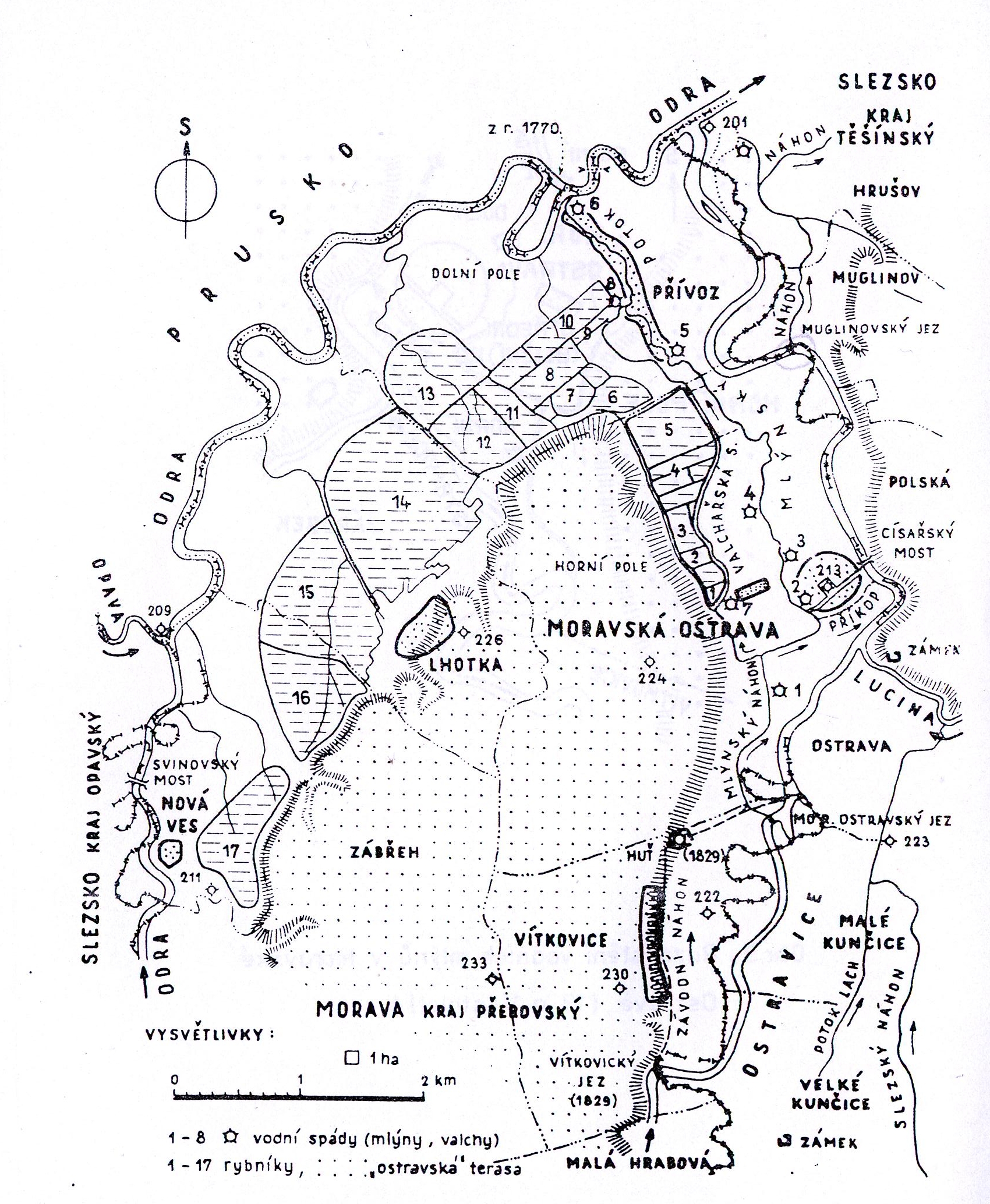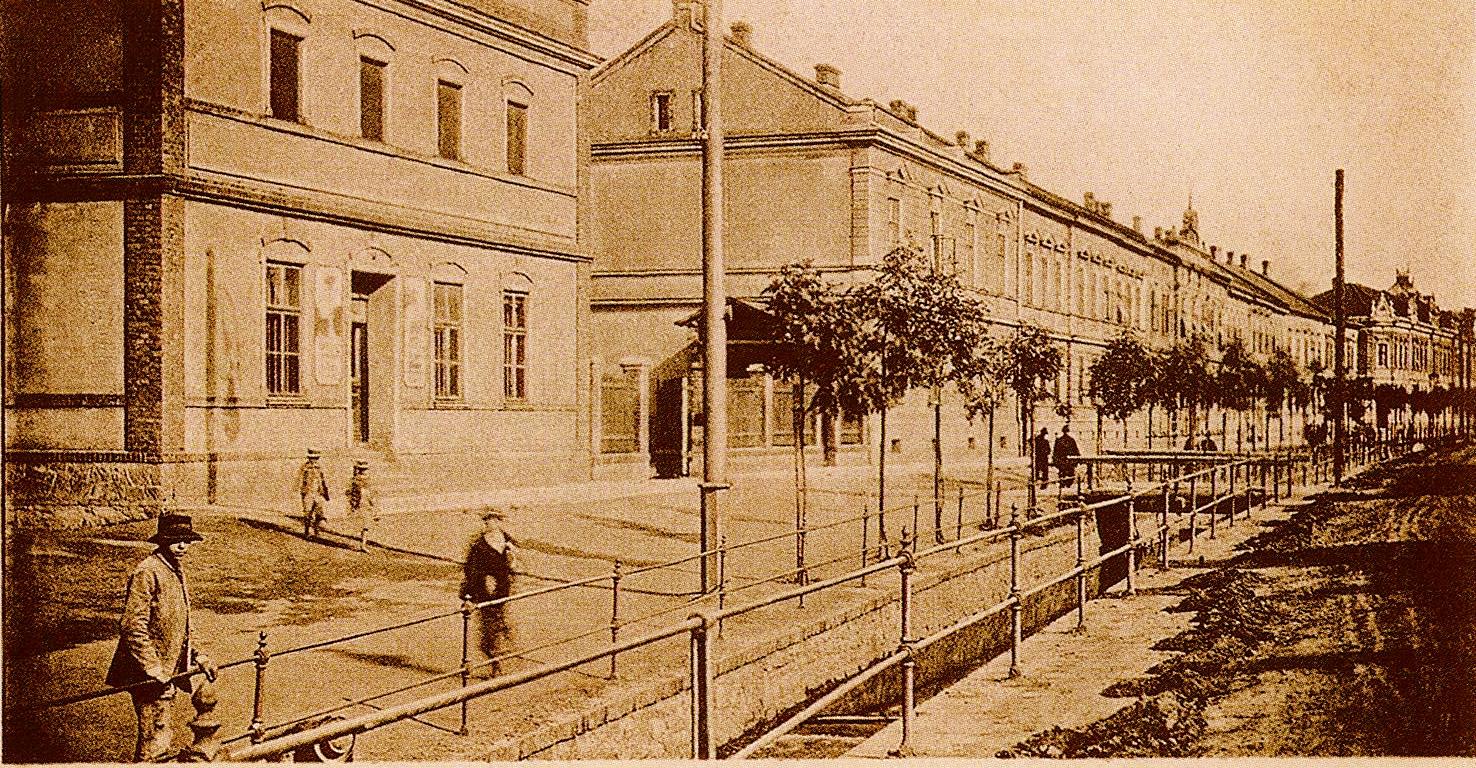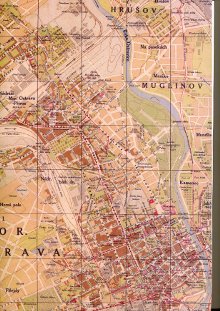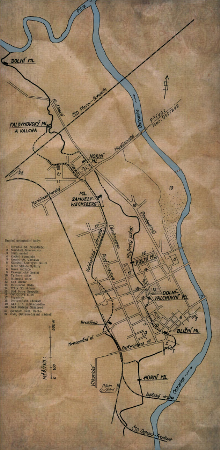Mill race in Moravská Ostrava and Přívoz
The history of race in Ostrava:
If the beginning of the first Ostrava´s mills is dated to 1396 we can assume that
as early as in the 14th century there was a watercourse running through Ostrava
on which the mills were built. Further development of the Mill race can also be
connected with the name Jan Čapek from Sány who became in unclarified circumstances
the master of Ostrava after Mikuláš Sokol from Lamberk. He was the last master of
Ostrava who also possessed strategiccaly important Polish Ostrava. The possession
of Polish Ostrava enabled him to build a hard weir on Ostravice river which was
anchored on its both banks. The hydraulic structure was a part of the city fortification
because it provided the supply of water to the moats surrounding the city and secondarily
served for the mills operation. It also enabled to build the ponds between Ostrava
and Přívoz that was later a significant economical benefit for the City of Ostrava.
The weir, later called Ostrava´s weir that was situated about 160 m or 400 m above
the today´s railway bridge Ostrava-Frýdlant track, drove water to an open shallow
race on the left bank of Ostravice river. With time the
mill stream and Valchařská gutter became wastewater annoying inhabitants with its
odour. Only after building the systematic urban sewarage system in the area of Sokolská
street, Tyršova street, Poděbradova street and Havlíčkovo riverbank it was possible
in 1937 to shut down both gutters in the part from Vítkovice plant waste pipe in
Vysokopecní street up to the mouth to Odra river in Přívoz with the exception of
the part starting at the coking plant Karolina to Reimannova paper factory at Jindřich
mine. The rests of the stinking race in the area of Jindřiška housing development
were filled as late as at the end of the fiftieth of the 20th century.
Ostravice river, Odra river and mill race:

This way ended the hundred year existence of the original water management system
of medieval Ostrava.

Valchařská gutter on the street "Nadražni", approximately at the Hotel Nocolas.
Around the year 1900.

